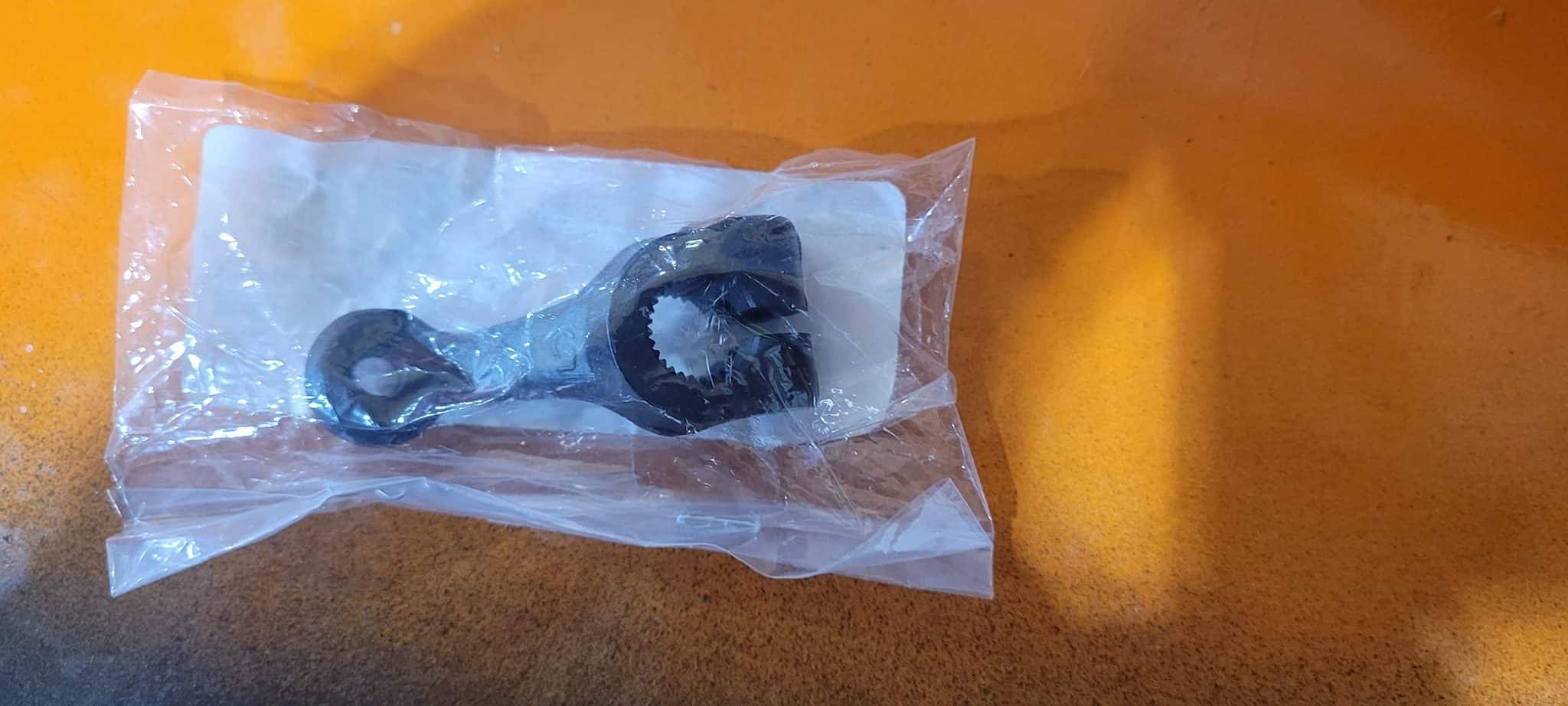
The case of the crunchy gearbox
My motorcycle has always had a crunchy gearbox from new. It’s well-known and there isn’t really a fix for it. However, many riders have found that buying a shorter lever from another model will shorten the travel and make gear switches easier and faster. I’ve known about this for years. I even had the part number, but at around 70€ for the piece of aluminium, I’d resisted it as the pain wasn’t great enough. Also, the dealer is quite far away and for a time, wouldn’t order parts unless you paid a deposit, which meant going there twice. So, I’ve been managing for a few years now.
Last week, I’d had enough and bought the part, fitted it, and now wonder why I waited so long. It makes such a difference to me.
The crunchy gearbox of change
Why am I mentioning this? We all have our own “crunchy gearboxes”, problems that we sit on for a while, making do. Sometimes the inconvenience fades, sometimes it stays the same, and sometimes it grows. After writing my series of articles on choice points, inspired by current customers, events have taken a turn for each client.
As a reminder, a choice point is a critical moment where a person or group becomes aware of a decision opportunity and must choose between automatic, reactive behaviour and intentional, values-driven action. It’s a decision-making moment where leaders or teams can either:
- Reinforce the existing (often unconscious) cultural norms, ways of doing, thinking and behaving, or
- Intentionally shift toward desired processes, behaviours, or values to achieve an alternative, often transformational outcome.
When inconvenience becomes full-blown pain
For one client, we’d been discussing the latent issue for a few years, but the prospect of change felt too great. There were emotional ties and interpersonal relationships involved, and addressing the problem seemed daunting as well as potentially disruptive. They made do. As the external context has shifted and business has become harder, the problem has become more and more apparent, yet the barrier to action was still too high to make what seemed like a tough decision. These last weeks, the problem has erupted into crisis, threatening the very existence of the company. The choice has now become apparent: decide or die.
For another client, the choice point is slowly evolving and becoming more pressing. The organisation is still blind to what would need to be done, because it lacks the experience of system maturity at the process, organisational and strategic levels that are now required.
So why don’t we fix our crunchy gearboxes?
Humans are strongly influenced by cognitive biases that anchor us to the present and the familiar. The normalcy bias leads us to assume that tomorrow will look much like today, which makes us discount the possibility of rare but catastrophic events. Similarly, optimism bias convinces us that negative outcomes are less likely to happen to us personally, while the status quo bias reinforces a preference for inaction or minimal change even when stronger preventive steps are warranted. These tendencies combine to keep us locked into present conditions, resisting the kind of mental leaps needed for long-term foresight.
Another major barrier is how we misperceive time and growth. Humans intuitively think in linear terms and struggle with exponential processes, a flaw known as exponential-growth bias. This means we chronically underestimate how quickly problems like viral outbreaks or climate impacts can escalate. Alongside this, projection bias makes us assume that our future needs and preferences will mirror our present ones, while present bias causes us to heavily discount future benefits relative to immediate costs. The result is that preventive investments appear less attractive than reactive responses, even when early action is far cheaper and more effective.
Finally, both individuals and institutions often suffer from a failure of imagination. We focus on familiar threat models and overlook novel or slowly emerging dangers, the so-called creeping crisis. Because preventive success is invisible (when nothing happens, it looks like nothing needed to be done), systems underinvest until a problem explodes into crisis. This invisibility of prevention, combined with cognitive blind spots and short-term incentives, explains why societies repeatedly let manageable risks evolve into full-blown emergencies before responding.
Why I can help with other people’s crunchy gearboxes
Unlike with my motorcycle, where I had an emotional connection to the problem and kept tolerating it, I don’t carry the same attachments when I look at organisations and their challenges. My neurodiverse perspective allows me to observe systems clearly and to notice patterns in interpersonal dynamics long before they harden into crises. This distance means I can suggest solutions without being pulled into the emotional knots that often hold leaders back. At the same time, I understand the pressures and realities that organisations face, so my recommendations remain grounded in their context.
Seeking external advice is, in effect, a way to increase internal awareness: it helps people see the crunchy gearbox before it seizes completely, and it provides the space to act decisively before the choice point becomes a crisis with far greater consequences.
Have you been tolerating a crunchy gearbox in your organisation? If you can hear the faint crunch of a latent problem, be it in your team dynamics, a stalled strategy, or a process that isn’t scaling, don’t wait for it to become a crisis.
My unique ability to observe systems and spot interpersonal dynamics long before they become a problem allows me to help you navigate these choice points with clarity and objectivity. I offer a fresh perspective, free from internal biases, to help you find solutions that fit your organisation’s specific situation.
If you’re ready to address the crunch before the breakdown, I invite you to reach out to me directly for a conversation. Let’s explore how we can smooth the gears of your organisation together.
